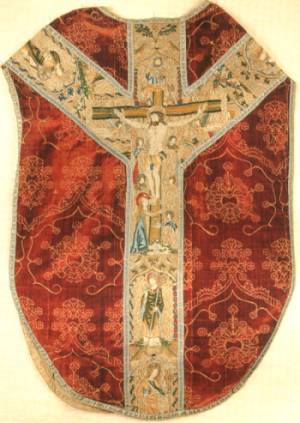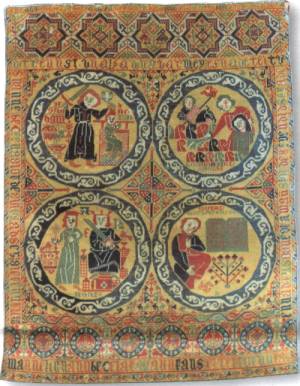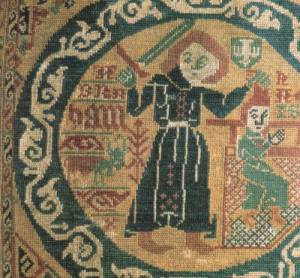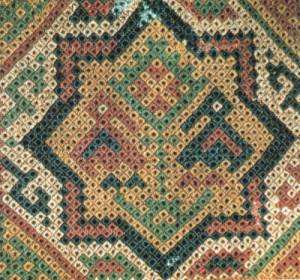In the church Skalholt, for instance, Morris saw two altar cloths "edged with Icelandic silver" and a chasuble "with beautiful English fourteenth century embroidery". This chasuble is now in the National Museum of Iceland, acquired in 1935 (Inv.Nr. 11923), and there are also two altar frontlets decorated with metal disks, silver disks on one of them (Inv.Nr. 1145, and Inv.Nr. 21.1.1991). At a farm in southern Iceland Morris observed a large carved chest, which he identified correctly as fourteenth century German work; four panels from this chest, which had belonged to the bishop's seat at Skalholt in earlier days, are now also, since 1883, in the National Museum of Iceland (Inv.Nr. 2437).

chasuble National Museum of
Iceland,
(Inv.Nr. 11923),


